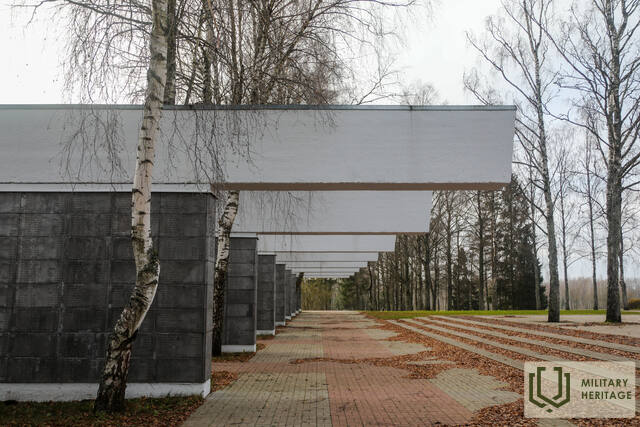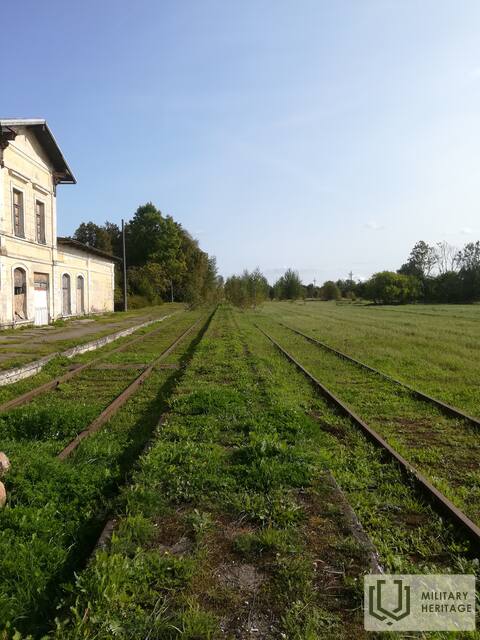Guided excursion in Priekule “Along the Footsteps of World War II in the "Courland Pocket””
Battle site

Used sources and references:
http://www.dienvidkurzeme.travel/visainfo/item/vesturei-pa-pedam/dazadi/pa-2-pasaules-kara-pedam-priekule-un-tas-apkartne-19441945g/
Your comments
Related timeline
Related topics
Related stories
The story of 19-year-old Raisa Ahmedeyev about the reconnaissance battle on February 14, 1945 near Priekule
Bashkir-born Red Army soldier Rais Ahmadeev's (19 years old) account of the Soviet army's preparations for the attack on Priekule and the reconnaissance battle in Piekule on 14 February 1945.
19-year-old Alfons Wolgemuth's story about the reconnaissance battle on February 17, 1945 near Priekule
Alfons Volgemuth was a 19-year-old boy, a radio operator and served in the army of Nazi Germany.
"No one has come back from this operation and it is not known if there are any survivors. I myself took part in that war as a 19-year-old radio operator and I am one of the 2, later 3 survivors who were taken prisoner by the Russians. I want to reflect the events from my own experience."
"Digging is better than burrial!"
The order of the Army Group “Kurland” is: "Build and build!" It is a task for every soldier of the front of the rear services. Which is best marked by the word: "Digging is better than burrial!"
"The war is not over until the last soldier is buried" (Saldus German Soldiers' Cemetery)
Kurzeme emerged as a separate and distinct battlefield on 10 October 1944. Some 500 000 German troops were counted as surrounded. According to reports from the 1st Baltic Front Headquarters, only a "small effort" was needed to completely liberate the entire Baltic coast. However, the fighting in Kurland continued for another seven months and Kurland became a symbol of the end of the Second World War.
During the seven months of fighting until May 1945, German forces in Courland lost 154 108 soldiers killed, wounded and missing. Since 1997, a war cemetery survey and reburial of soldiers near Saldus has been carried out and currently 27,000 names of fallen soldiers can be found here
"The war is not over until the last soldier is buried" (Saldus German Soldiers' Cemetery)
Kurzeme emerged as a separate and distinct battlefield on 10 October 1944. Some 500 000 German troops were counted as surrounded. According to reports from the 1st Baltic Front Headquarters, only a "small effort" was needed to completely liberate the entire Baltic coast. However, the fighting in Kurland continued for another seven months and Kurland became a symbol of the end of the Second World War.
During the seven months of fighting until May 1945, German forces in Courland lost 154 108 soldiers killed, wounded and missing. Since 1997, a war cemetery survey and reburial of soldiers near Saldus has been carried out and currently 27,000 names of fallen soldiers can be found here
"The war is not over until the last soldier is buried" (Priekule Brethren Cemetery)
Kurzeme emerged as a separate and isolated battlefield on October 10, 1944. About 500,000 German soldiers were considered surrounded. According to reports from the headquarters of the 1st Baltic Front, only "a small effort" was needed to completely liberate the entire Baltic coast. However, the fighting in Kurzeme continued for another seven months and Kurzeme became a symbol of the end of World War II.
During the seven months of fighting until May 1945, the German armed forces in Courland lost 154,108 soldiers killed, wounded, and missing, while the Red Army's losses were around 400,000 killed, wounded, or missing.
Testimony of Jūlijs Bērziņš about the 201st (43rd Guards) Latvian Rifle Division of the Red Army in 1942-1945
In the fall of 2011, I came across the memoirs of Jūlijs Bērziņš (1900–after 1963), a Latvian living in Russia and a former soldier of the 201st (43rd Guards) Latvian Rifle Division (hereinafter – the 201st Latvian Rifle Division; Division) of the Red Army – a 189-page story written by hand in Russian in two lined notebooks by a Latvian soldier about his experiences in the German-USSR war (1941–1945). These memoirs were also not commissioned work.





































Welcome! Please do not use the term "liberation battles" when talking about the entry of Soviet troops into the German-occupied territories of Latvia at the end of the Second World War.